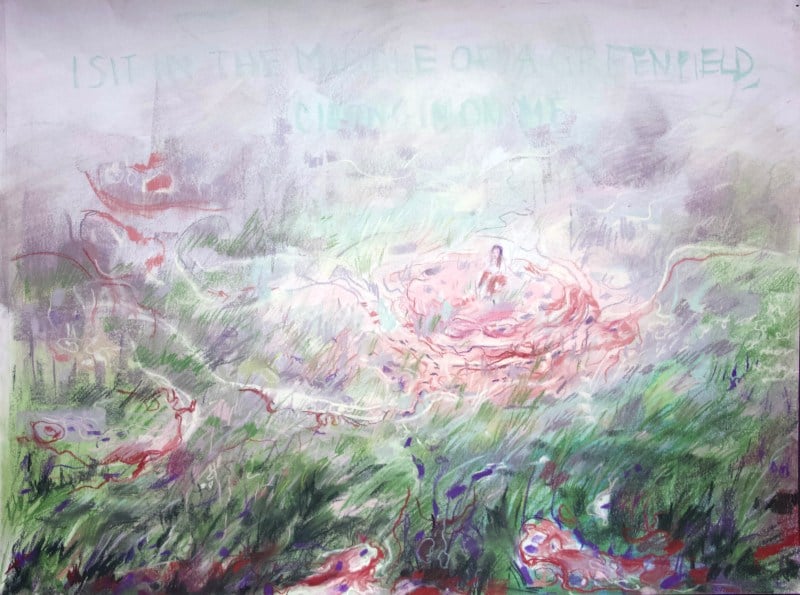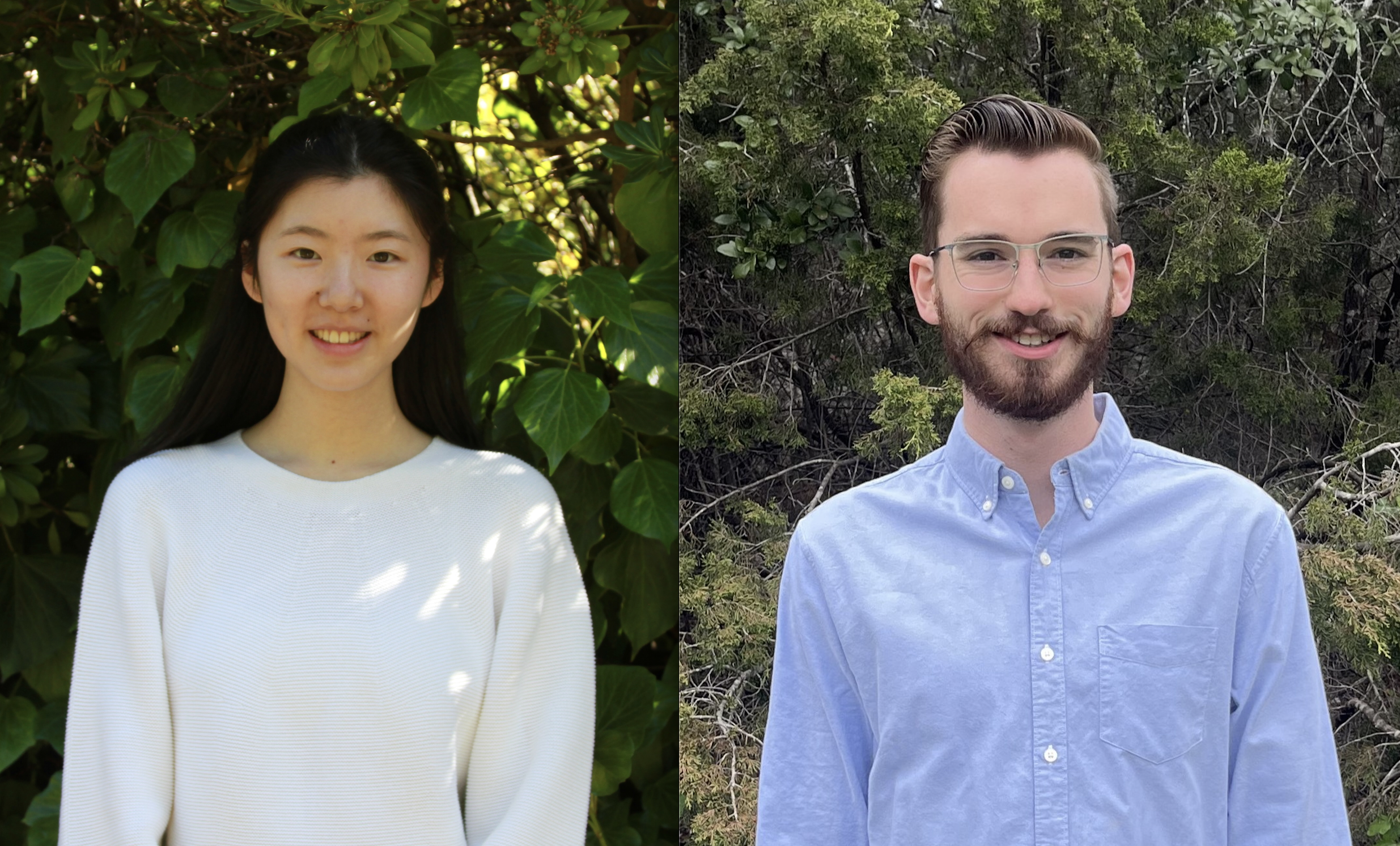Jenny Shi ’24 watched an unnerving video during her frosh year that determined her academic course.
In the video, a blue light shines into a mouse’s brain, prompting the mouse to immediately start crawling in a circle. As the light switches off, the mouse’s motion halts. The video features a pioneer optogenetics experiment conducted by Karl Deisseroth, a professor of bioengineering and of psychiatry and behavioral sciences at Stanford.
For Benjamin Przybocki ’24, an interest in math and logic began as early as his sophomore year of high school, when he was recognized as one of three students worldwide with a perfect score on the AP Statistics exam in 2018.
Last week, Shi and Przybocki were announced as two of 16 students nationwide selected as 2024-2025 Churchill Scholars. They will receive full scholarships to pursue a one-year master’s degree in science, mathematics or engineering at the University of Cambridge.
Shi and Przybocki are the first Stanford students since 2019 to be selected for the scholarship, which covers full tuition, a stipend, travel costs and the chance to apply for a $4,000 special research grant.
At Cambridge, Shi will pursue a master of philosophy (MPhil) in biological sciences, researching proteins that are misfolded in people with Alzheimer’s and Parkinson’s disease.
“I’m interested in studying the molecular mechanism of memory, specifically diseases when memory fails,” Shi said.
Przybocki will pursue an MPhil in advanced computer science at Cambridge, where he will study automated reasoning and formal methods.
Both Shi and Przybocki were also recipients of the 2023 Barry Goldwater Scholarship, which is awarded to sophomores and juniors “who intend to pursue research careers in the natural sciences, mathematics and engineering.”
“These are much needed motivation to get through the more difficult parts of learning a difficult subject,” Przybocki said of the Goldwater and Churchill scholarships.
“A unique ability to harmonize the sciences with art”
Shi has grappled with neuroscience, memory and disease in her work for as long as she can remember. An artist and poet, her paintings sample from biological processes, and her poetry draws from medical metaphors.
In a painting for ARTSTUDI 242: “Drawing and Creative Writing” that reflected on her grandfather’s stroke, Shi portrays herself surrounded by a swirl of blood vessels and grass.
“I can still hold the image of the sky on the back of my eyelids,” Shi writes in a poem accompanying the painting. “My grandfather’s arteries, barely open / I sit in the middle of a green field, closing in on me.”

Shi majors in chemistry but makes visual art in many studio classes, including ARTSTUDI 243: “Anatomy for Artists” taught by art & art history lecturer Lauren Toomer.
Toomer noted Shi’s “unique ability to harmonize the sciences with art.” She invited Shi to be an artist-researcher for Portrait Project, a Medicine and the Muse project she co-leads. As part of the project, Shi creates art pieces with Stanford Hospital in-patients at their bedside.
Shi recalled painting a picture of a beach with a patient, who opened up to Shi about her mental state and read an original piece of poetry to Shi.
“The patient read us one of her poems about ‘the brain and heart divorced,’ and it was really wonderful,” Shi said. “We get to learn a lot about the patients’ lives, and it is a very meaningful experience.”
Described by many as an “artist-scientist,” Shi has illustrated research papers published by Deisseroth’s lab, which she joined as an undergraduate researcher in December 2020.
The illustrations and papers have gathered more than 50,000 views on X (formerly Twitter), according to Longzhi Tan, assistant professor of neurobiology. Tan used to be a postdoctoral scholar in Deisseroth’s lab.
Tan wrote that Shi’s accomplishments were beyond an undergraduate level. She has co-authored several papers, including one in Science about cell changes in the cerebellum during development and aging, in which she was the co-first-author alongside Tan.
Studying structural biology at the MRC Laboratory of Molecular Biology at Cambridge will broaden Shi’s perspectives in science and medicine, according to Tan.
“She has truly become the backbone of my lab since its conception, and a rising star in brain sciences,” Tan wrote.
From a perfect AP Statistics score to math and logic research
Sitting on an orange couch in the David Packard Electrical Engineering Building, Przybocki said his former self “wouldn’t have been surprised” that he is studying math and computer science at Stanford.
“Knowing statistics can help you find the truth in a world with so much bogosity,” he told the Austin American-Statesman in 2018.
Przybocki’s AP Statistics teacher Laura Ringwood was impressed by his performance. “He’s definitely one of the most passionate students I’ve had in statistics and has an amazing ability to explain,” Ringwood told the American-Statesman.
Similarly, Clark Barrett, computer science professor and Przybocki’s math honors thesis advisor, noted that Przybocki digested complex mathematical ideas “independently and, apparently, quite easily.”
Przybocki took CS 257: “Introduction to Automated Reasoning” in the fall of 2022 and has since been conducting research with Barrett, who was involved in designing the course.
“Early on in our collaboration, I was taken aback by how quickly Ben started producing results,” Barrett wrote in a statement to The Daily. “Even understanding these problems requires a deep knowledge of logic and model theory.”
Besides his coursework in mathematics, Przybocki is pursuing a minor in philosophy and participates in debates on ethics as part of the Girard Society. He also practices Brazilian jiu-jitsu and lives in the Sigma Phi Epsilon fraternity house.
Przybocki said he is eager to study at Cambridge, which he said has been “a center for logic” for over a hundred years. After Cambridge, he hopes to complete a doctoral degree in automated reasoning and formal methods with the ultimate goal of teaching computers to prove mathematical theorems for themselves.
“If we can automate mathematics, then we can figure out how to automate intuition, problem solving and understanding,” Przybocki said.
